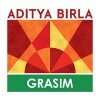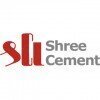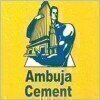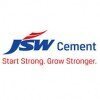Filter interviews by
Birla Cement Interview Questions and Answers
Birla Cement Interview Experiences
21 interviews found
I appeared for an interview in Jan 2025.
(2 Questions)
- Q1. What is the process of manufacturing of cement?
- Ans.
Cement is manufactured through a complex process involving raw materials like limestone, clay, and gypsum.
Crushing and grinding of raw materials (limestone, clay, and iron ore)
Mixing the crushed materials in a rotary kiln
Heating the mixture to a high temperature to form clinker
Grinding the clinker with small amounts of gypsum to produce cement
Packaging and distribution of the final product
- Q2. What are the machinaries user in cement plant?
- Ans.
Various machineries are used in a cement plant for different processes.
Crushers: Used to crush the raw materials like limestone and clay
Kiln: Used for heating the raw materials to form clinker
Grinding mills: Used to grind the clinker into fine powder
Conveyors: Used for transporting materials within the plant
Packaging machines: Used for packaging the final cement product
Mechanical Maintenance Engineer Interview Questions asked at other Companies
I appeared for an interview in Sep 2024, where I was asked the following questions.
- Q1. What is the process of cement manufacturing?
- Ans.
Cement manufacturing involves raw material extraction, processing, and chemical reactions to produce clinker, which is then ground into cement.
1. Raw Material Extraction: Limestone, clay, and other materials are mined.
2. Crushing and Grinding: Raw materials are crushed and ground into a fine powder.
3. Blending: The powdered materials are blended in specific proportions.
4. Calcination: The blended materials are heated i...
- Q2. What are the processes involved in kiln operation in a Cement Control Room (CCR)?
- Ans.
Kiln operation in a Cement Control Room involves monitoring, controlling, and optimizing the cement production process.
Raw Material Preparation: Ensuring the correct mix of limestone, clay, and additives.
Kiln Feeding: Controlling the feed rate of raw materials into the kiln.
Temperature Monitoring: Keeping track of the kiln temperature, typically around 1400-1600°C.
Fuel Management: Managing the type and amount of fuel u...
Senior Engineer Interview Questions asked at other Companies
Computer Hardware & Networking Engineer Interview Questions & Answers
posted on 23 Aug 2023
I applied via Approached by Company and was interviewed in Jul 2023. There were 3 interview rounds.

(2 Questions)
- Q1. Working New company
- Q2. Yes I can working New company
(4 Questions)
- Q1. Computer hardware network job requirement immediately in Chhattisgarh
- Q2. 8 years experience
- Q3. Regular job profile
- Q4. Please help me job in it represents
Interview Preparation Tips
Computer Hardware & Networking Engineer Interview Questions asked at other Companies
(2 Questions)
- Q1. What is a rankine cycle
- Q2. How to calculated your current plf
Birla Cement interview questions for popular designations
I applied via Approached by Company and was interviewed in Dec 2022. There were 4 interview rounds.

Technically discussion by all
.... .... .... .... .... ..
(1 Question)
- Q1. Technical interview regarding previous job /company
Interview Preparation Tips
Executive Design Engineer Interview Questions asked at other Companies

(2 Questions)
- Q1. What is clearance in spherical roller bearing the bearing code is 23228
- Ans.
Clearance in spherical roller bearing with code 23228
Clearance is the gap between the inner and outer rings of a bearing
It allows for thermal expansion and contraction of the bearing components
Clearance is specified by the bearing manufacturer and can be measured using a feeler gauge
For the 23228 bearing, the clearance value can be found in the manufacturer's specifications
- Q2. How many types of belt conveyor used in cement plant
- Ans.
There are several types of belt conveyors used in cement plants.
Belt conveyors can be horizontal, inclined, or declined depending on the application.
Some common types of belt conveyors used in cement plants include troughed belt conveyors, cleated belt conveyors, and sidewall belt conveyors.
Troughed belt conveyors are used for conveying bulk materials and are commonly used in cement plants for transporting raw material...
Officer Mechanical Interview Questions asked at other Companies
I applied via Recruitment Consulltant and was interviewed in Oct 2022. There were 2 interview rounds.

(2 Questions)
- Q1. Cement related questions
- Q2. Marketing moment strategies
Interview Preparation Tips
Customer Sales Representative Interview Questions asked at other Companies
I applied via Company Website and was interviewed before Mar 2023. There were 4 interview rounds.
Common scenes, confidence your job skills knowledge.
(9 Questions)
- Q1. What is the process hazard and how to identify.
- Ans.
Process hazard is a potential source of harm or danger within a process industry setting.
Process hazard is any condition that poses a risk to the safety or health of employees, the public, or the environment.
Common process hazards include chemical reactions, fires, explosions, and toxic releases.
Process hazards can be identified through process hazard analysis (PHA) techniques such as HAZOP, FMEA, and What-If analysis.
...
- Q2. Which tools to use for Incident investigation.
- Ans.
Common tools for incident investigation include root cause analysis, fishbone diagrams, 5 Whys, and incident reporting forms.
Root cause analysis helps identify the underlying causes of incidents.
Fishbone diagrams visually display the potential causes of an incident.
5 Whys technique involves asking 'why' multiple times to uncover the root cause.
Incident reporting forms document details of the incident for analysis and p
- Q3. How to minimise incident and how to increase SOT.
- Ans.
To minimize incidents, focus on proactive safety measures and training. To increase SOT, implement efficient work processes and prioritize safety.
Implement regular safety training for all employees
Conduct regular safety inspections and audits to identify potential hazards
Encourage reporting of near misses to prevent future incidents
Implement a safety incentive program to promote safe behaviors
Invest in safety equipment...
- Q4. What you know about MOC, and how to increase work force involvement.
- Q5. What is critical lifting plan.
- Ans.
A critical lifting plan is a detailed document outlining the procedures and precautions to be taken when lifting heavy objects to ensure safety.
Identifies the specific equipment needed for the lift
Outlines the steps to be taken before, during, and after the lift
Includes information on weight limits, proper lifting techniques, and potential hazards
Specifies the roles and responsibilities of individuals involved in the l...
- Q6. Difference Between HIRA,JSA and SOP.
- Ans.
HIRA identifies hazards, JSA breaks down tasks, SOP provides step-by-step instructions.
HIRA (Hazard Identification and Risk Assessment) is a systematic process to identify hazards and assess risks in the workplace.
JSA (Job Safety Analysis) breaks down a job into its individual tasks to identify potential hazards and develop safety measures.
SOP (Standard Operating Procedure) provides step-by-step instructions on how to ...
- Q7. What you know about safety legal compliances.
- Ans.
Safety legal compliances refer to laws and regulations that organizations must follow to ensure the safety of their employees and the public.
Safety legal compliances include OSHA regulations, local building codes, and industry-specific guidelines.
Employers must provide a safe work environment, conduct regular safety training, and maintain proper records.
Examples of safety legal compliances include having fire extinguis...
- Q8. What you know about Contractor Safety Management.
- Ans.
Contractor Safety Management involves ensuring that contractors working on site follow safety protocols to prevent accidents and injuries.
Developing contractor safety policies and procedures
Conducting pre-qualification assessments of contractors
Providing safety training to contractors
Implementing safety audits and inspections for contractors
Ensuring compliance with safety regulations and standards
Establishing clear com...
- Q9. What you know about AI in safety field and hot to help it.
- Ans.
AI in safety field involves using artificial intelligence technology to improve safety measures and prevent accidents.
AI can be used to analyze data from sensors and cameras to identify potential safety hazards in real-time.
AI can help in predicting and preventing workplace accidents by analyzing patterns and trends in safety data.
AI can automate safety inspections and audits, saving time and reducing human error.
AI ca...
(2 Questions)
- Q1. How to implement hierarchy control method.
- Ans.
Hierarchy control method involves implementing controls in a specific order of effectiveness.
Identify hazards and risks in the workplace
Implement elimination or substitution controls first
If elimination or substitution is not feasible, implement engineering controls
If engineering controls are not sufficient, implement administrative controls
Personal protective equipment (PPE) should be used as a last resort
Regularly re
- Q2. What is the procedure of Safety Committee and Safety audit.
- Ans.
Safety Committee oversees safety practices and procedures, while Safety Audit evaluates the effectiveness of safety measures.
Safety Committee is responsible for developing safety policies, conducting safety training, and addressing safety concerns.
Members of the Safety Committee may include representatives from different departments to ensure comprehensive safety oversight.
Safety Audit involves evaluating the implement...
(1 Question)
- Q1. How to liasoning local workers and vendor.
- Ans.
To liaise with local workers and vendors, establish clear communication channels, build relationships, and ensure mutual understanding and cooperation.
Establish regular communication channels with local workers and vendors
Build relationships based on trust and mutual respect
Ensure clear understanding of expectations and responsibilities
Provide necessary training and support to local workers and vendors
Address any issue
Interview Preparation Tips
- It's depends on job professional
Skills evaluated in this interview
Top Birla Cement Assistant Manager Safety Interview Questions and Answers
Assistant Manager Safety Interview Questions asked at other Companies
I applied via Approached by Company and was interviewed in Jun 2022. There were 2 interview rounds.

(2 Questions)
- Q1. Cement related questions and stability
- Q2. Cement related questions and Last company stability
Interview Preparation Tips
- cement
Sales Officer Interview Questions asked at other Companies
I applied via LinkedIn and was interviewed in Aug 2022. There were 2 interview rounds.

(1 Question)
- Q1. How many years of experience did you have
Interview Preparation Tips
Electrical Engineer Interview Questions asked at other Companies
Top trending discussions






Birla Cement Interview FAQs
Tell us how to improve this page.
Birla Cement Interviews By Designations
- Birla Cement Sales Officer Interview Questions
- Birla Cement Production Supervisor Interview Questions
- Birla Cement MIS Executive Interview Questions
- Birla Cement Senior Engineer Interview Questions
- Birla Cement Area Sales Officer Interview Questions
- Birla Cement Safety Officer Interview Questions
- Birla Cement Electrical Engineer Interview Questions
- Birla Cement Maintenance Engineer Interview Questions
- Show more
Interview Questions for Popular Designations
Birla Cement Interview Process
based on 19 interviews
Interview experience
Interview Questions from Similar Companies
Birla Cement Reviews and Ratings
based on 306 reviews
Rating in categories
|
Assistant Manager
66
salaries
| ₹5.3 L/yr - ₹16.6 L/yr |
|
Sales Officer
50
salaries
| ₹2 L/yr - ₹5.2 L/yr |
|
Senior Executive
27
salaries
| ₹4.5 L/yr - ₹10.5 L/yr |
|
Deputy Manager
15
salaries
| ₹5.8 L/yr - ₹16 L/yr |
|
Sales Executive
15
salaries
| ₹2.3 L/yr - ₹8 L/yr |

UltraTech Cement

JK Cement

Grasim Industries

ACC
- Home >
- Interviews >
- Birla Cement Interview Questions













